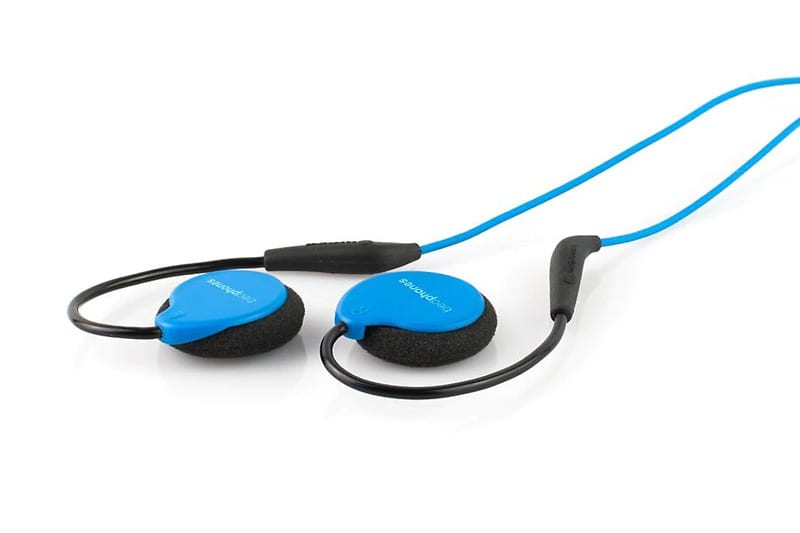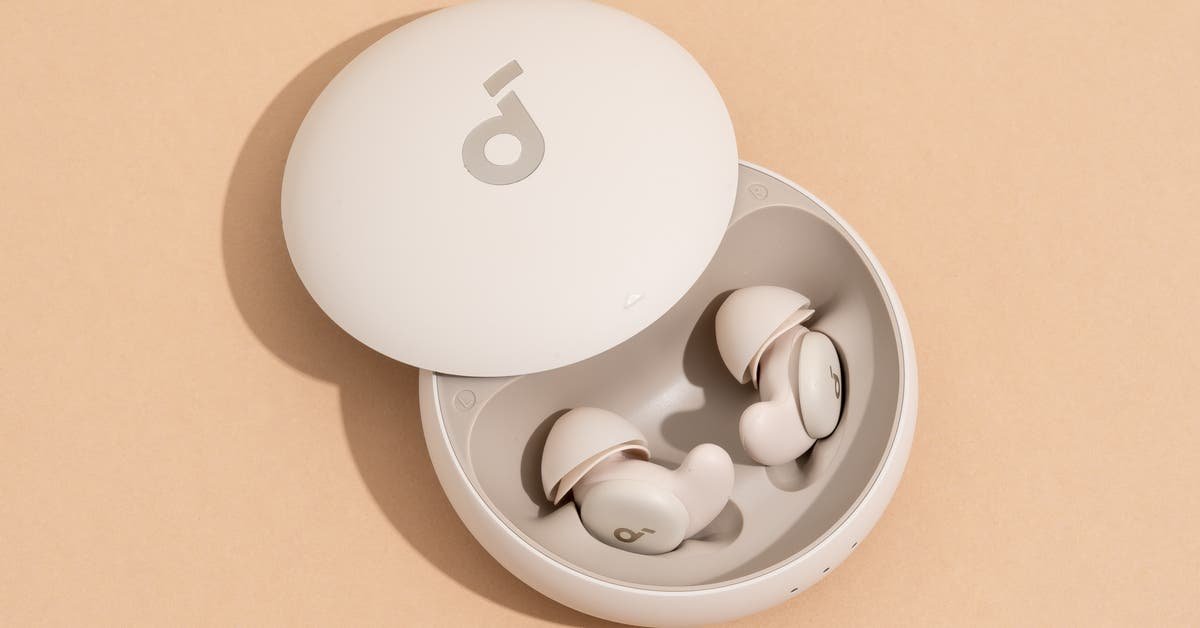Wireless Sleep Aid Headsets: How Bluetooth Tech Helps You Sleep Better
If you’ve ever wrestled with sleepless nights, tangled cords, or the discomfort of clunky headphones in bed, there’s good news: wireless sleep aid headsets are changing the game. At NeuroTechInsider.com, we’re all about digging deep into tech that actually works for sleep, stress, and brain wellness—no fluff, just evidence-backed gear that’s comfortable, wearable, and insanely effective.
Whether you’re looking to drown out snoring, stream white noise, or soak in calming meditations, these headsets combine comfort, Bluetooth connectivity, and sleep-optimized design to help you knock out faster—and stay that way.

What Are Wireless Sleep Aid Headsets?
Wireless sleep aid headsets are wearable audio devices designed specifically for use while you sleep. Unlike regular earbuds or over-ear headphones, they’re tailored to deliver sound—whether it’s music, white noise, or meditations—in a form factor that’s soft, safe, and sleep-friendly.
These devices remove all the tangled wires and hard plastics, replacing them with plush headbands, sleep masks, or ultra-light earbuds that let you move freely without waking up sore or disconnected.
Fun Fact: Most Bluetooth sleep headsets today are also washable and have built-in volume controls, so you don’t even need to touch your phone in the middle of the night.
How They Work: Bluetooth Connectivity Explained
Almost every wireless headset made for sleep uses Bluetooth technology to stream audio from your smartphone, tablet, or laptop directly to your ears. No cords. No clutter.
- Pairing: Just hold down the power button to enter pairing mode. Then, select the headset from your device’s Bluetooth menu. That’s it.
- Range: Most models offer a stable connection within 15–30 feet, so you can move freely around your bedroom without signal loss.
- Streaming: These devices support Spotify, YouTube, Audible, Calm, and virtually any app that plays audio.
Want the full science behind Bluetooth sleep tech? Check out this breakdown from SleepFoundation.org.
Types of Wireless Sleep Aid Headsets
Not all wireless sleep headsets are built the same. Depending on how you sleep—on your back, side, or stomach—different designs may suit you better. Here’s a quick breakdown:
1. Headband Style
These are basically soft, stretchy headbands with flat speakers sewn inside. They’re ideal for side sleepers and folks who move a lot at night.

Best For: Side sleepers, people who hate earbuds, or anyone who wants to combine a sleep mask and audio in one.
Popular models:
- SleepPhones Wireless – up to 24h battery life, washable, available in Breeze fabric.
- Manta SOUND Sleep Mask – blackout sleep mask with Bluetooth speakers and adjustable eye cups.
2. Earbud Style
These tiny, lightweight buds are perfect for users who want minimal bulk and maximum portability. Many offer noise isolation and sleep tracking features.

Best For: Light sleepers who want something discreet and stable during the night.
- Ozlo Sleepbuds: Ultra-small, 10h battery life, comes with a companion sleep app.
- Anker Sleep A20: Hybrid noise-blocking design, app integration, up to 14h battery.
3. Sleep Mask Headphones
If total darkness is your thing, sleep masks with built-in Bluetooth speakers offer a complete sensory escape. They block out light, wrap around your head gently, and deliver immersive audio.
Perfect for travelers, those living in urban areas, or anyone battling light pollution in the bedroom.

Check out CNET’s roundup of best Bluetooth sleep masks for 2025.
Top Features to Look For
Buying the right wireless sleep headset isn’t just about price—it’s about comfort, sound quality, battery life, and design. Here’s what to keep in mind before adding to cart:
- Ultra-thin speakers: Look for headsets with speakers less than 0.25 inches thick to avoid ear pressure.
- Fabric quality: Breathable, sweat-wicking materials are key—especially in summer.
- Battery life: Minimum 10 hours is ideal to cover full sleep cycles. Some models even hit 24 hours.
- On-device controls: Skip the midnight phone fumbling—models with built-in buttons for volume and skip are a game-changer.
- Washability: Trust us—you’ll want to wash it. Go for removable speakers and machine-safe materials.
All our featured models at NeuroTechInsider pass these checks and are personally tested by our team.
Best Wireless Sleep Headsets in 2025
Let’s get into the top contenders that are currently dominating the sleep tech space. We’ve tested dozens of devices, but these four Bluetooth-enabled sleep headsets stand out for performance, comfort, and reliability.
1. SleepPhones Wireless
- Design: Soft fleece or moisture-wicking Breeze fabric headband
- Battery Life: Up to 24 hours
- Best For: Side sleepers, white noise lovers
- Extras: Machine washable, available in multiple sizes
It’s hard to beat the comfort and consistency of SleepPhones Wireless. They’re cozy, low-profile, and perfect for all-night use. They’ve been the OG of this space—and for good reason.
2. Ozlo Sleepbuds
- Design: Micro earbuds designed to sit flush in your ear
- Battery Life: 10 hours with sleep tracking
- Best For: People who hate headbands
- Extras: Smart alarms, adaptive audio
These are tiny, lightweight, and nearly invisible once inserted. Their app integration and advanced features like sound masking and sleep analysis make them a smart pick for data-driven users.
3. Anker Sleep A20
- Design: Silicone earbuds with hybrid noise isolation
- Battery Life: 14 hours
- Best For: City dwellers, snoring partners
- Extras: Dedicated sleep app with guided meditations
Anker’s Sleep A20 is one of the most affordable and accessible entries into the sleep tech market—especially for users needing moderate noise isolation.
4. Manta SOUND Sleep Mask
- Design: Full blackout eye mask with embedded Bluetooth speakers
- Battery Life: 20 hours
- Best For: Travel, shift workers, people with light sensitivity
- Extras: Replaceable eye cups, low-profile speakers
This is the ultimate all-in-one sleep cocoon. We love that the Manta SOUND Sleep Mask blocks out both light and sound, turning your bedroom into a blackout chamber.
Benefits of Bluetooth Sleep Headsets
Still unsure if you need one? Here’s what makes these devices more than just a techy gimmick.
1. Cord-Free Comfort
No more getting tangled in wires or waking up to a phone crashing to the floor. Wireless designs mean freedom of movement and better safety at night.
2. Sound Therapy on Demand
With access to Spotify, YouTube, or apps like Calm and Headspace, you can stream guided meditations, binaural beats, or sleep stories instantly—without disturbing your partner.
3. Noise Masking
If your partner snores or you live near a noisy street, a good pair of sleep headphones can help you stay in deep, uninterrupted sleep all night long.
4. Smart Features
Some models now come with smart alarms, sleep tracking, and soundscapes that adjust in real-time to your environment. Talk about sleeping smarter—not harder.
Typical Use Cases
- For Light Sleepers: Mask ambient sounds like snoring, dogs barking, or traffic.
- For Anxiety or ADHD: Stream calming meditations or nature sounds to wind down.
- For Frequent Travelers: Use during flights, train rides, or hotels where silence is rare.
- For Shift Workers: Block out daylight and daytime noise during rest hours.
At NeuroTechInsider.com, we know that **good sleep is a foundational neurotech strategy**—and Bluetooth sleep headsets are one of the easiest ways to upgrade it without pills or side effects.
Are Wireless Sleep Headsets Safe?
Let’s talk safety—because if something’s going in or around your head for 6–8 hours nightly, it better be harmless.
Bluetooth Radiation
All Bluetooth devices emit low-level non-ionizing radiation. The good news? Studies show it’s significantly below harmful thresholds. These headsets typically use Class 2 or Class 3 Bluetooth, which are far less powerful than your Wi-Fi router or phone.
Comfort and Hearing Health
Unlike standard earbuds or noise-cancelling headphones, sleep-specific models use ultra-low volume and ambient modes. They’re made to support hearing health, not damage it.
Bottom Line:
- Safe for nightly use
- No proven risks of Bluetooth exposure
- Gentle materials designed to avoid skin irritation
FAQs About Wireless Sleep Headphones
Q: Can I wear these every night?
A: Absolutely. Just make sure the materials are breathable and you occasionally wash the headband (most are machine safe).
Q: Do they really block snoring?
A: Yes, especially if you’re using earbuds or noise-isolating models like the Anker A20. Headband models may need a white noise app for stronger effect.
Q: Are there models for kids or teens?
A: Yep. Some brands offer smaller sizes or adjustable fits. Look for low-volume limits and soft materials for young users.
Q: Can I connect it to Apple Music or YouTube?
A: 100%. As long as your device supports Bluetooth audio, you’re good to go. These headsets don’t lock you into any app or subscription.
Final Thoughts: Are They Worth It?
If you’re struggling with noisy nights, stress-related insomnia, or simply want a smarter way to wind down, wireless sleep aid headsets are a no-brainer investment. At NeuroTechInsider, we’ve tested dozens of tech solutions—and few are as instantly life-enhancing as these sleep-optimized wearables.
Whether you choose a sleek earbud or a full blackout mask, the key is to find a fit that supports your sleep habits and comfort style.
And if you want our full reviews, comparison tables, and editor picks? Head to our curated guide: Best Sleep Headphones for 2025.
Sleep smarter. Move freer. Wake clearer.
https://cdn.thewirecutter.com/wp-content/media/2024/10/sleep-headphones-2048px-4331.jpg?auto=webp&quality=75&crop=1.91:1&width=1200
